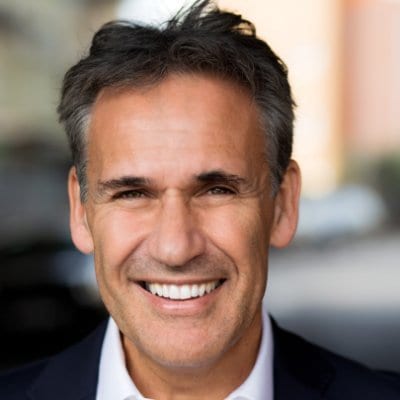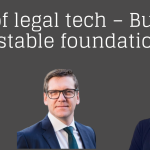When Professor Richard Susskind first conceived of the idea of conducting a hackathon to help develop the new online courts system, his primary ambition was to raise awareness and enthusiasm among the legal technology community – and that has certainly been achieved.
Over the course of this weekend (1-2 July) the 24-hour hackathon – jointly staged by the Society for Computers and Law; Legal Geek; the Judiciary of England and Wales; and HM Courts & Tribunals Service – brought together 30 teams and a total of 220 coders, students, lawyers, judges and more, with the ambition of creating designs, solutions, systems and technologies that will have real world application within the new electronic court environment.
There has been a palpable buzz around the event, with teams flying in from as far as Australia. It was worth it: the Gilbert + Tobin team won a prize for best teamwork, although they could have equally have won a prize for most effort or perhaps least sleep.
The outright winner was a team made up from Wavelength Law and the Law Society of England and Wales. A team from Pinsent Masons were runners up. A ‘Coolest Tech’ prize went to a team from Cambridge University. And ‘Craziest Idea’ went a team called the Two of Us.
Much credit for the success of the event, which was hosted by University of London, goes to Legal Geek’s founder Jimmy Vestbirk, who Susskind tells me “really knows how to run a hackathon.” Vestbirk’s enthusiasm is contagious and one of the thing that most impressed Susskind about the hackathon was its energy. Law firms brought banners and t-shirts and Pinsents brought three giant screens to work on.
Aside from the healthy competitive spirit at the event, participants were undoubtedly inspired by the possibility of becoming a part of one of the biggest changes to affect our court system since the nineteenth century.
The idea of online dispute resolution for low value claims first reared its head in 2014, when the Civil Justice Council conceived of the idea and Susskind led an advisory group that published landmark recommendations in 2015. We are now at the stage where the government has pledged to spend £1bn developing the online courts, with the first stages now in alpha testing.
The presence at the hackathon of senior judiciary including Lord Chief Justice Lord Thomas of Cwmgiedd helped to ram home its significance. Lord Thomas has been a driving force behind the online court reforms and Susskind tells me: “It’s really important that it’s a collaborative process and we had the Lord Chief Justice there as well as three high court judges and the head of digital of the courts service there too.”
Susskind, who is president of the Society of Computers and Law, adds: “The Lord Chief Justice was wearing the hackathon t-shirt: you only needed to see that to see their engagement. People not wearing t-shirts were upset they couldn’t get one.”
The big question – once the excitement has passed and hopefully photos of the t-shirt wearing senior judiciary have winged their way to Legal IT Insider Towers – is what happens next.
Susskind says: “We had 29 presentations in an hour – it was rapid fire, four minutes each and from that we chose the best nine.
“There are about a dozen ideas we’ll be talking to the Court Services about, working out how we can get teams in and discuss their ideas in more detail.”
Court IT projects have in the past seen many fingers burned – think the disastrous Libra project at the turn of the century to provide a national IT system for 385 Magistrates Courts that saw costs escalate from £194m to £390m. Unsurprisingly the plan this time is to run careful pilot projects and prototypes, and it would be a surprise to no-one if we don’t see the concrete outcome of the hackathon any time soon.
But taking the practical ideas forward was only part of the plan and Susskind adds: “My hope was to raise the enthusiasm of the legal technology community and also the top law firms. Half of the top 20 law firms took part and the other half that didn’t put forward teams expressed their regret.”
Changes to the law, even massive ‘once in a lifetime’ ones – and trust me, I’ve reported on them – can have all the excitement and energy of a damp squib.
A big credit goes to the legal tech community and hackathon organisers for rallying in this way. Professor Susskind set out to raise awareness of the changes but the hackathon team has ended up achieving perhaps more than they bargained for, by winning a few hearts and minds.
[email protected]
The judges:
Mrs Justice May, High Court judge; Mrs Justice Carr, High Court judge; Amanda Finlay, Chair of Law for Life; Kevin Gallagher, Digital Change Director; Chris James, Technology Lawyer, SCL Trustee; James Moore, Co-founder, F-Lex Legal Ltd
To find out more about Wavelength Law’s impressive winning concept read: https://www.wavelength.law/blog/2017/7/4/the-story-of-colin-24-hours-in-the-lives-of-caffeine-fuelled-legal-engineers
And this from Debenham Ottoway, who entered a team that include Peppermint Technology: http://www.debenhamsottaway.co.uk/news/2017/07/debenhams-ottaway-lead-online-courts-hackathon-team-to-the-final-round-in-24-hour-hackathon
First pic in of a victorious Wavelength Law team with Lord Chief Justice Lord Thomas on the right.









